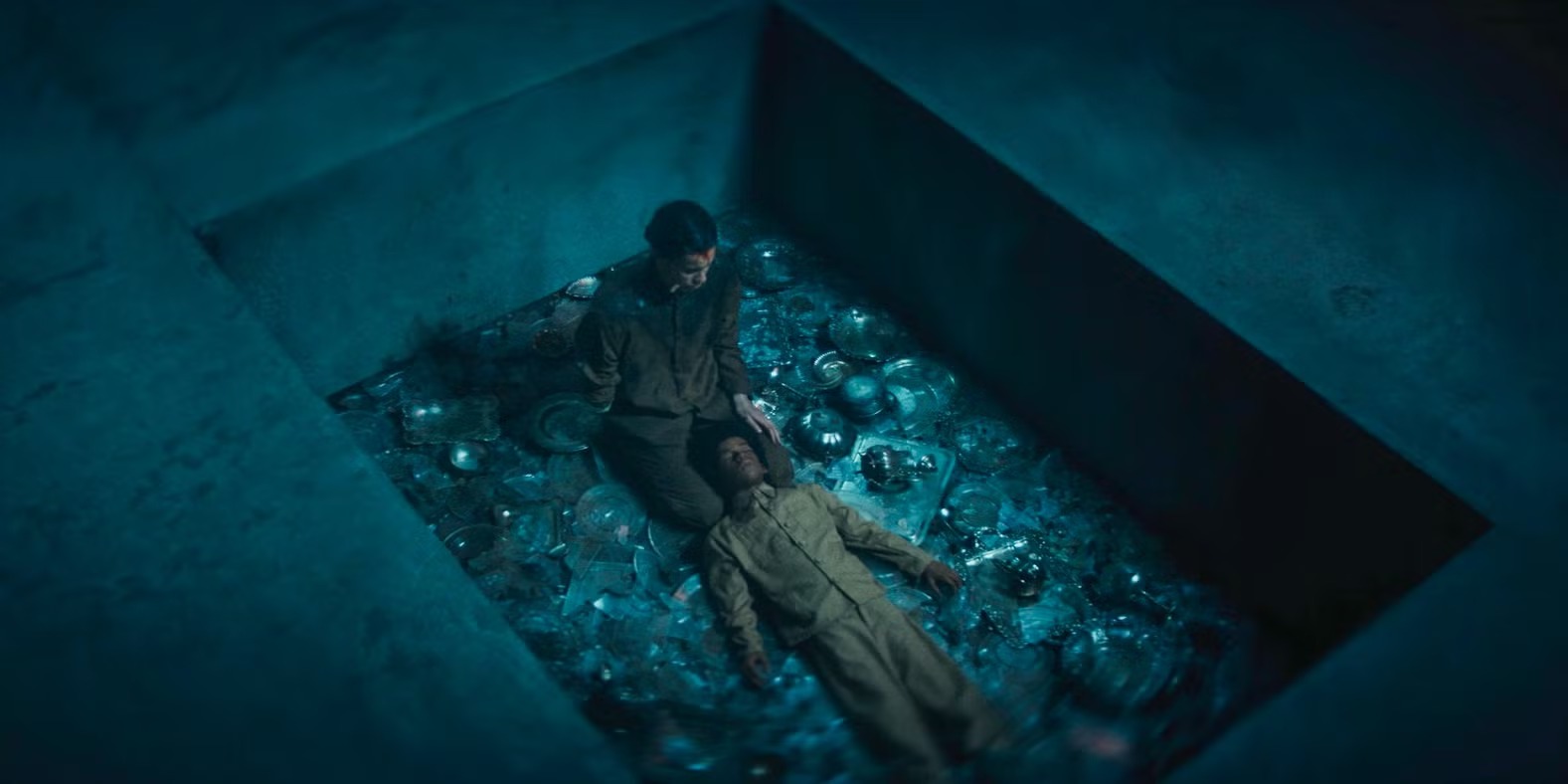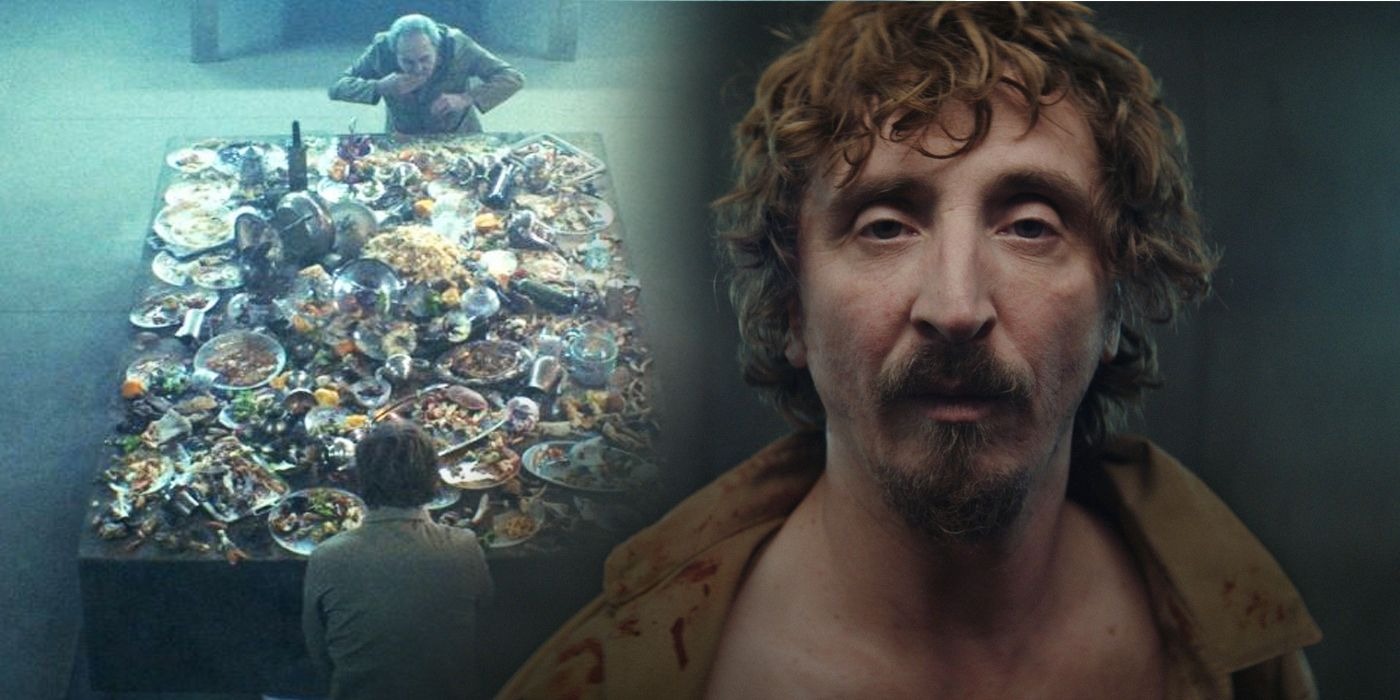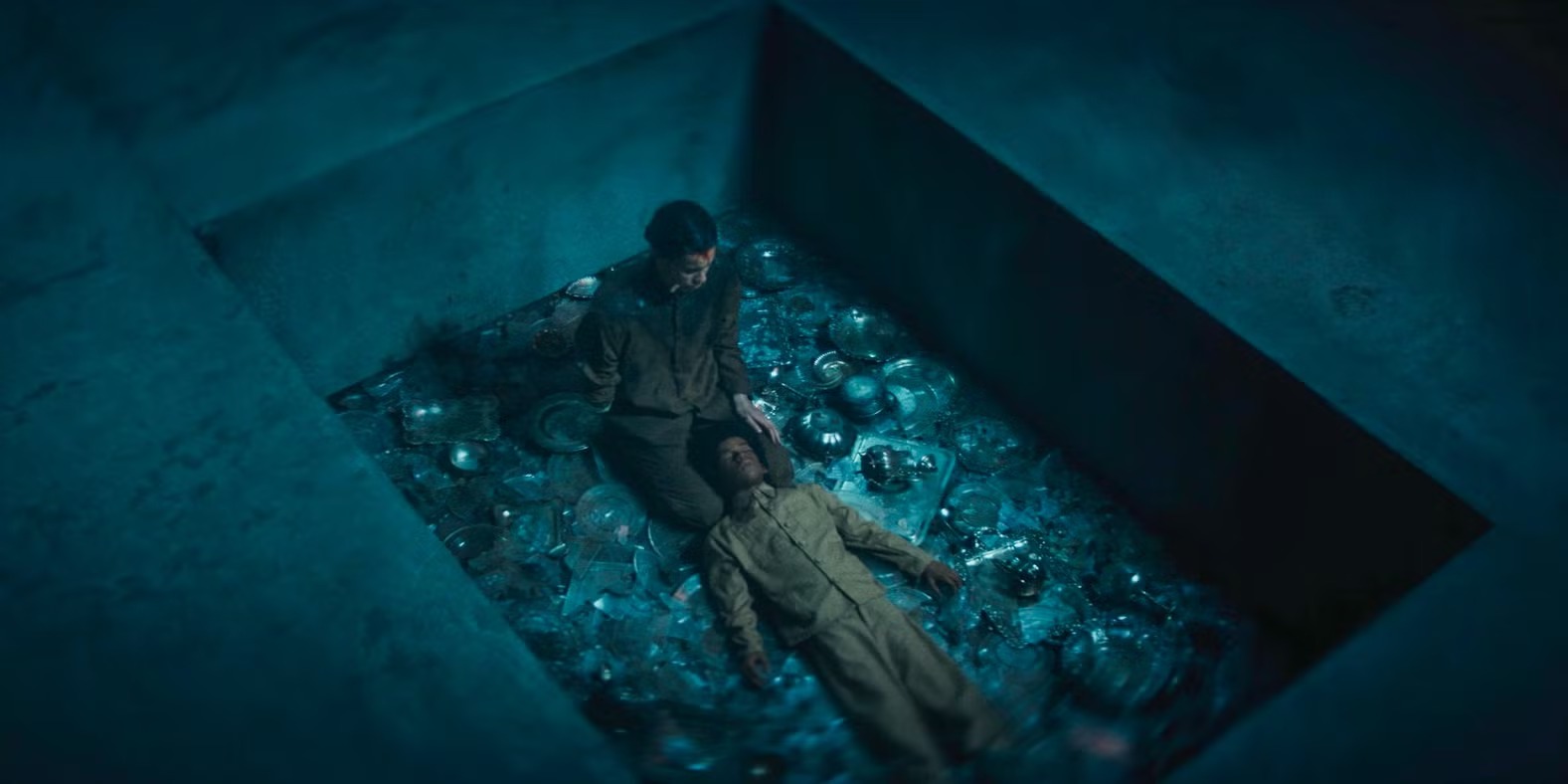From the time it dropped on Netflix in February 2020, “The Platform” (“El hoyo” in Spanish) quickly began to scare viewers with its unusual dystopian horror setting and the striking symbolism that runs through its story.
Rather than beginning as an obvious commentary, the film initially comes off as a tale of selfishness and survival, especially with the way it examines how people behave under pressure. But as the plot reaches its final stages, the themes begin to lean toward something much deeper and more disturbing.

Even though it ranks among the most-watched Netflix original films of all time, its closing moments left many wondering what the real point of the story was.
The Platform’s Strange Setting and How It Works
Right from the start of “The Platform,” the audience meets Goreng, played by Iván Massagué, as he enters a unique vertical prison. Each day, chefs upstairs prepare a lavish meal big enough to satisfy everyone in the many levels below.
The food is placed on a platform that moves downward, stopping briefly at every level to allow prisoners to eat. Each level gets only two minutes before the platform continues going down. Those on the higher floors always get enough to eat, while those far below often face starvation.
The key detail is that inmates don’t stay on the same level. Every month, they’re moved to a new floor, which constantly reshuffles their place in the food chain.
Trying to Understand the Message Behind the Film’s Ambiguous Ending
Because the ending of “The Platform” isn’t exactly straightforward, many people have tried to piece together what it’s trying to communicate. The movie carries strong symbolic weight from beginning to end, and as it closes, the meaning becomes harder to pin down.
But some clues offer a better understanding of what the filmmakers were aiming to say.
What Exactly Is the Purpose of the Prison in The Platform?
Throughout the film, some scattered hints are given about the prison’s real purpose — and certain theories about how the institution operates could change how people view the entire film. It’s only when Goreng encounters Imoguiri, played by Antonia San Juan, that things begin to make more sense.
She used to work for the prison before becoming an inmate herself. Imoguiri tells Goreng that the organization prefers to call the facility a Vertical Self-Management Center (VSC).
According to her, the idea is to build a structure where people can learn to take only what they need without needing instructions or guidance. The concept is that food will reach all levels if everyone acts out of a natural sense of solidarity.
But Goreng doesn’t fully buy into that idea. His thinking takes a darker turn. He believes that if such unity truly happened, then those in power would ensure it doesn’t happen in society.
That interpretation suggests the prison operates as a kind of experimental zone for testing how the masses react under pressure — a smaller version of an exploitative system where the elite watches from above while people below fight for scraps.
What the Ending of The Platform Tries to Say
When the film reaches its climax, it’s revealed that Miharu’s child is real and has been surviving on the very bottom floor. Goreng manages to reach the lowest level with a weapon, having fought his way down to enforce food rationing.
He had planned to send a panna cotta dessert back to the top as a sign that the prisoners have learned to manage resources responsibly. But after he sees the child, Goreng decides the message needs to change. The child’s presence proves that those running the facility broke their own rules.
They had always insisted that no minors were inside, but that was false. The story ends with Goreng placing the child on the platform and sending her upward. His goal now is no longer about showing that prisoners can work together — it’s to reveal to the people at the top that the system they oversee is cruel beyond words.
The lie about the child’s presence makes it clear that those running the show cannot be trusted.
What the Panna Cotta Is Meant to Represent
Earlier in the story, Goreng and Baharat, played by Emilio Buale, had come up with the idea of using the panna cotta as a symbol of control. They wanted it to be proof that the people in the prison could be disciplined enough to send something untouched back to the top.
But this dessert ends up meaning more than that. There’s a scene where a chef panics after noticing a hair in the panna cotta and demands a new one be made. It feels absurd, especially because starving inmates wouldn’t care about such things.
But the scene highlights how out of touch the staff are. Their concern is with the presentation, not the fact that people are killing each other just to eat. Later, Goreng and Baharat hold onto the panna cotta while on Level 333, and they even plan to share it with the child.
Interestingly, the room doesn’t heat up or freeze like others before it. That raises questions about whether Goreng is simply hallucinating as he nears death. If one looks closely, the child ends up holding more power as a symbol than the panna cotta.
The dessert can easily be dismissed or ignored by those upstairs, but the child directly shows the system’s impact on the innocent — and that carries far more emotional weight.
What the Director of The Platform Had to Say About the Film’s Ending
In a conversation with Digital Spy in September 2019 after the film premiered, the director Galder Gaztelu-Urrutia shared some thoughts about the confusing ending. For him, the final part of “The Platform” shows how different belief systems tend to fail in real-life settings.

According to Gaztelu-Urrutia, while the movie does speak about income inequality, it doesn’t limit itself to just one ideology. There’s some criticism of capitalism, yes, but things don’t exactly improve when Goreng and Baharat try to apply socialist ideas either.
They try convincing others to share food, but the effort turns violent, and many die as a result. He wanted viewers to walk away unsure — unsure if the plan worked, unsure if the people upstairs even care about those below.
Gaztelu-Urrutia mentioned that they had filmed another ending where the child reaches the top, but they eventually removed it. “I’ll leave what happens to your imagination,” he said.
How The Platform Connects to The Platform 2
Those who go back to rewatch “The Platform” with its symbolic layers in mind may come out with a different interpretation. Despite that, Netflix went ahead to release a sequel in October 2024 titled “The Platform 2,” introducing new characters: Perempuan (Milena Smit) and Zamiatin (Hovik Keuchkerian).
The basic concept remains familiar. They are also trapped in the Vertical Self-Management Center, though they begin on higher levels. This sequel doesn’t directly continue Goreng’s story but gives more insight into the structure’s social order.
Two factions dominate the prison: the Loyalists, who eat only what they should, and the Barbarians, who take all they can. This results in more violent conflict throughout the facility. As the film reaches its later parts, it begins to reference events from the first movie. Still, critics didn’t respond to it the same way.
Robert Daniels of RogerEbert.com said the sequel didn’t earn its dramatic ending and felt like it was just dragging out an idea that had already worked better before. For him, trying to turn “The Platform” into a full series felt like a bad decision from the beginning.



